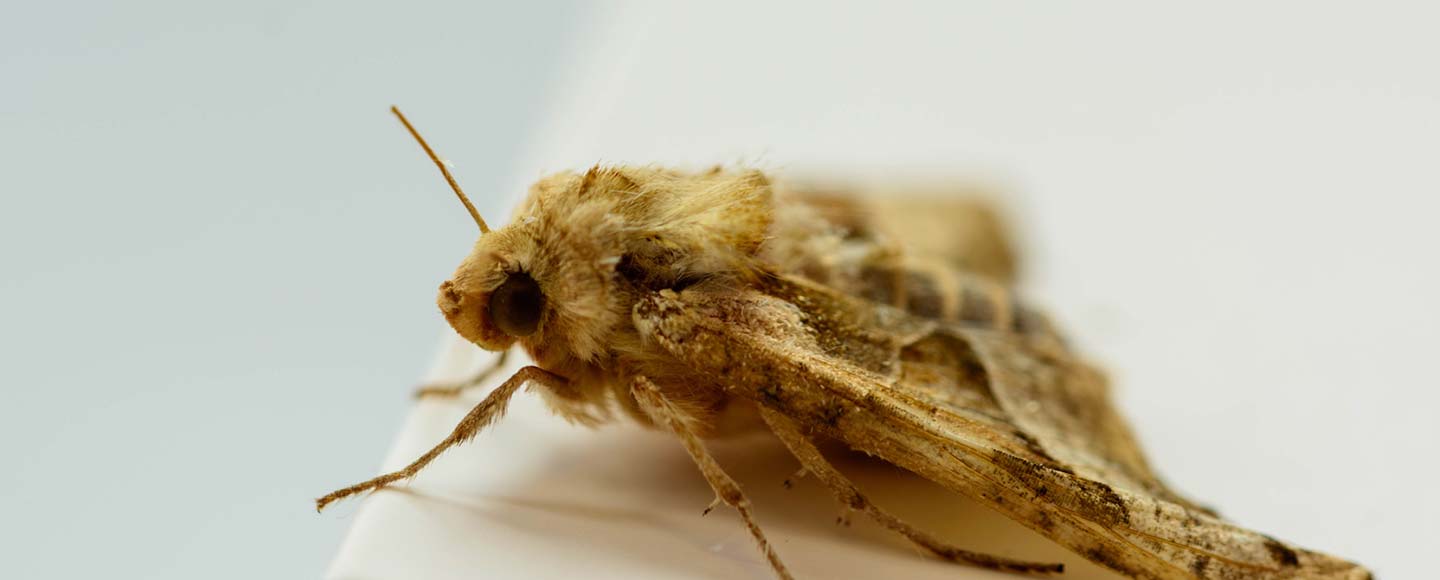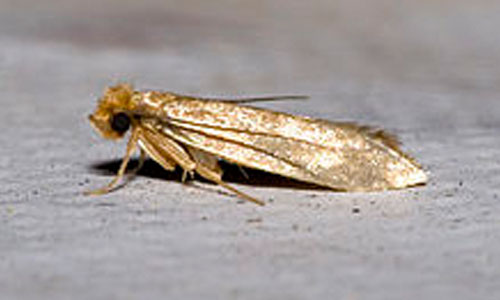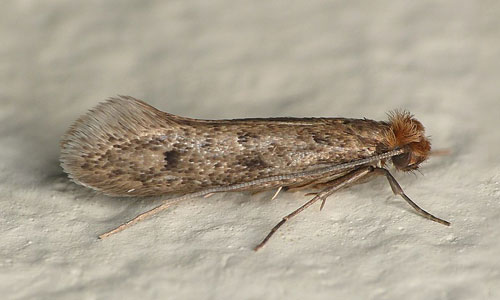Moths
There are approximately 2,000 species of moths in New Zealand. All moths have two pairs of wings coated in scales, large compound eyes and a coiled proboscis, but the size and overall appearance of moths differs from species to species.
While a majority of moth species are harmless and many are useful for their role in silk-making and nutrition, certain species of moths are destructive household pests. These include the Common Clothes Moth and Case-making Clothes Moth, which both require the attention of a highly skilled pest control technician.
To eliminate moths in your workplace, consider having SMART Sense installed. SMART Sense detects moths remotely and alerts us of any activity, protecting you from a potential infestation.

Shield Your Family & Home Year Round from Moths
Flick's Home Protection Plans
Flick's Home Protection Plans provide effective and affordable protection for your home and family from a wide range of pests. Our Gold plan includes preventive measures to stop moths from entering your home in the first place, as well as reactive and emergency moth pest control services if needed. All plans come with a 12-month warranty* and easy monthly payments. With a variety of plans to choose from, you can find a plan that meets your specific needs and budget. Contact your local Flick branch to see if Home Protection is available in your area and begin shielding your family from moths today!
Commercial Pest Solutions
Integrated Pest Management Solutions
Our Integrated Pest Management program uses the latest technology focusing on prevention and addressing the root of the causes of pest problems to ensure a pest free environment for commercial workplaces and facilities. Our solutions are tailored to proactively prevent and help mitigate the impact and risk of a pest infestation. We combine tailored multi-faceted solutions with our latest digital pest technology supported by our highly regulated experienced team of technicians to bring you the best in pest control. Let us create a customised plan for your workplace today.
SMART Digital Pest Control
Our SMART Pest Control is a user-friendly digital pest control system that monitors your business by automatically detecting rodents, cockroaches, and moths. SMART technology will continuously monitor rodent activities. When activity is detected, the technology reacts immediately, records it, and generates a report while capturing rats safely and sustainably. For comprehensive, integrated protection against all significant pests, combine SMART automation with our standard pest control services.
Common Moth Questions
What are the general characteristics of moths?
Moths are fascinating insects with beautiful characteristics. They have two pairs of wings covered in scales, large compound eyes, and a coiled proboscis. The species of moths vary greatly in size and appearance, with some being dull shades of grey or brown while others in New Zealand display vibrant colours, even with radiant metallic shades. Indoors, most moths are small, with a wingspan under 2 cm, and are typically colored reddish brown, brown, or grey.
What are the general habits of moths?
Moths have diverse diets, habits, and behaviours that match their appearance. Some moths are pollinators of flowers, while others feed on stored foods. Moths are prey for many creatures like mammals, birds, reptiles, arachnids, insects, amphibians, and certain plants. Property owners often encounter moths when they feed on pantry food or damage fabrics in linen closets.
Why are moths considered pests?
Common clothes moths, also known as webbing clothes moths, are attracted to various natural materials like fur, silk, felt, feathers, and hair, not just wool. They are shiny golden colored and measure 2.5 to 5 cm in length. By the time you notice these moths, damage may have already been done to your belongings.
Where do moths live?
Clothes moths prefer dark areas like wardrobes, attics, and basements. They hide in fabric folds or forgotten corners. The larvae, not the adult moths, eat fabric, particularly natural materials with keratin. They enjoy consuming coats, sweaters, blankets, carpets, toys, pillows, and decorations. They are less interested in synthetic fibers but will eat stained fabrics and blends.
What are the best ways to control moths?
To prevent damage to clothes in storage, avoid dark areas and clean containers before use. Seal boxes with tape and store clothes in plastic bags. Make sure natural fibers and wool are clean before wrapping them individually in plastic sheets. Mothballs can deter pests, but they may leave a smell necessitating dry cleaning.
Common Moth Species

Common Clothes Moth
Apppearance
The Common Clothes Moth is 5-8mm long. The adult moth is a beige colour with a small patch of light red hair on the head.
Lifestyle
As larvae, moths are white caterpillars up to ½ inch long. They spin silken tubes of webbing as they move around on the surface of materials, and often feed within folds of fabric and other concealed areas. Threadbare spots occur where fibres are removed. Infested items should be laundered and discarded if necessary, and the primary source identified. Heat will kill any egg or larvae that are present. Insecticides applied to infested rugs and carpets may also be helpful, or spraying clothes with fabric-safe insecticide.
Habits
The Common Clothes Moth is a bothersome pest to humans as its main source of nourishment is from clothing. They love wool but are also happy to feed on other natural fibres, as well as other stored products. Once clothes have been attacked by clothes moths, they have a mesh-like appearance. They thrive in moist conditions but can also grow in low humidity. In nature they feed on the nesting materials or carcasses of birds and other animals.

Case-making Clothes Moth
Apppearance
The Case-making Cloths Moth is 7-10mm in length with a 10-14mm wingspan. They have 3 distinct dark spots on their wings.
Lifestyle
The complete metamorphosis stage goes from egg to larva, to pupa, and finally to adult. The last adult stage will only last 4-6 days, while the pupa stage lasts 9-19 days. Overall, the lifespan of the case making clothes moth lasts for 2 months, but there are some records indicating some process can take up to 2 years. The case making clothes moth is 7-10mm in length, with a 10-14mm wingspan. They have distinct 3 dark spots on their wings, but some are indistinct making them hard to identify.
Habits
The case making cloth is a secondary pest moth that feeds on woollens, upholstered furniture, feathers, felts, clothes, and woollen carpets. This species is not as prevalent as the webbing clothes moth. The damage done to your furniture pieces is actually done during the larvae state, as adults don’t feed on furniture. They cause damage through their mouthparts, which suck on the fabric-based commodities.
I found Moths! Help!
Don't worry, we're here to help. Follow these steps to stay safe until help arrives!
Call a Professional
Call Flick Pest Control Immediately.
If you encounter moths in your home or business, you may be dealing with an infestation. Don’t wait until the problem gets out of hand – we can help protect your property and ensure the health and safety of those around you. Fill out the form below or call 0800 710 010 today.
Leave the Moths Alone
Trust Flick Pest Control to handle the situation
Our pest control technicians have the knowledge, experience, and tools necessary to effectively and safely eliminate pests from your home or business. Attempting to treat moths on your own can be risky and may not fully eradicate the problem.
We will and ensure a safe and effective outcome for your property.
There May be More!
Don’t Go Looking Around!
Flick’s pest control experts will perform a thorough inspection of the property to identify any areas where moths may be present, followed by the development of a treatment plan tailored to the specific needs of the situation. By implementing effective pest control strategies, we can help ensure a pest-free environment for you.

